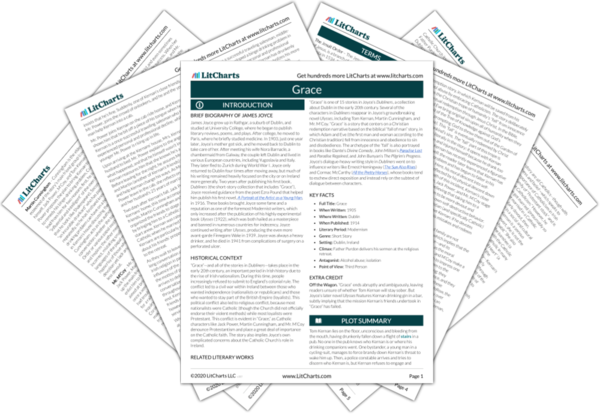James Joyce grew up in Rathgar, a suburb of Dublin, and studied at University College, where he began to publish literary reviews, poems, and plays. After college, he moved to Paris, where he briefly studied medicine. In 1903, just one year later, Joyce’s mother got sick, and he moved back to Dublin to take care of her. After meeting his wife Nora Barnacle, a chambermaid from Galway, the couple left Dublin and lived in various European countries, including Yugoslavia and Italy. They later fled to Zurich during World War I. Joyce only returned to Dublin four times after moving away, but much of his writing remained heavily focused on the city or on Ireland more generally. Two years after publishing his first book,
Dubliners (the short-story collection that includes “Grace”), Joyce received guidance from the poet Ezra Pound that helped him publish his first novel,
A Portrait of the Artist as a Young Man, in 1916. These books brought Joyce some fame and a reputation as one of the foremost Modernist writers, which only increased after the publication of his highly experimental book
Ulysses (1922), which was both hailed as a masterpiece and banned in numerous countries for indecency. Joyce continued writing after
Ulysses, producing the even more avant-garde
Finnegans Wake in 1939. Joyce was always a heavy drinker, and he died in 1941 from complications of surgery on a perforated ulcer.
